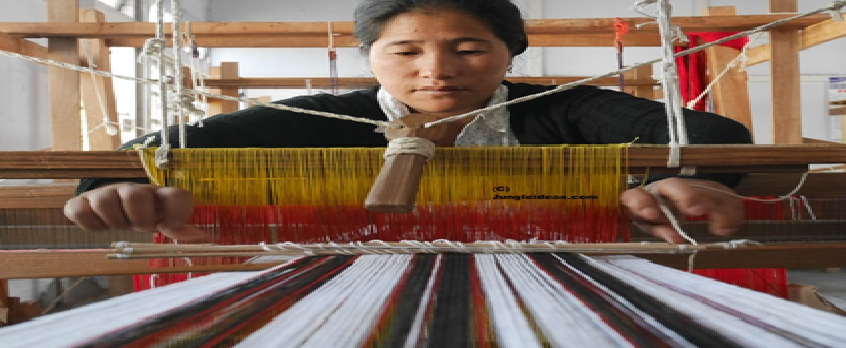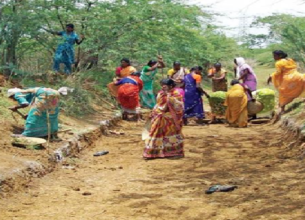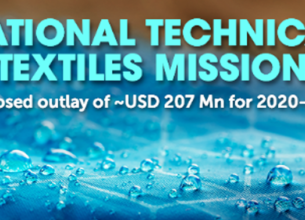PLI scheme for Textile Sector
31, Dec 2021

Prelims level : Schemes
Mains level : GS-III Indian Economy and Issues Relating to Planning, Mobilization of Resources, Growth, Development and Employment.
Why in News?
- The Ministry of Textiles has recently said that it will accept applications from January 1 for the Production Linked Scheme for Textiles announced in September this year.
About the News:
- The Union government in September approved production-linked incentive (PLI) for the textile sector with a budgetary outlay of ₹10,683 crore.
- The scheme is for man-made fibre (MMF) apparel, MMF fabrics and 10 segments/products of technical textiles.
- According to an official statement, the incentive structure for the textile sector is designed to Encourage investment in fresh capacities in MMF apparel, MMF fabrics, and 10 segments or products of technical textiles.
- The Scheme Envisages two types of investment with different set of incentive structure. In type one, any person, (which includes firm/company) willing to invest minimum ₹300 crore in Plant, Machinery, and civil works (excluding land and administrative building cost) to produce the notified products will be able to participate in the scheme. In the second type, anyone willing to invest minimum ₹100 crore will be eligible to participate.
- The government has already launched a National Technical Textiles Mission to promote research and development in that sector.
What is its Significance?
- The scheme is expected to attract fresh investment of more than ₹19,000 crore and cumulative turnover of over ₹3 lakh crore will be achieved under this scheme. It will create additional 7.5 lakh jobs in the sector.
- Further, priority will be given for investment in aspirational districts, tier-three, tier-four towns and Rural Areas.
- The scheme will benefit States such as Gujarat, U.P., Maharashtra, Tamil Nadu, Punjab, Andhra Pradesh, Telangana, and Odisha.
About the Textile Sector in India:
- Textiles & Garments industry is labour intensive sector that employs 45 mn people in India and is Second only to the agriculture sector in terms of employment.
- India’s textiles sector is one of the oldest industries in the Indian economy, and is a storehouse and carrier of traditional skills, heritage and culture.
- It can be divided into two segments-
- The unorganised sector is small scale and uses traditional tools and methods. It consists of handloom, handicrafts and sericulture (production of silk).
- The Organised sector uses modern machinery and techniques and consists of the spinning, apparel and Garments Segment.
Significance of the Textiles Sector:
- It contributes 2.3% to Indian Gross Domestic Product, 7% of Industrial Output, 12% to the export earnings of India and employs more than 21% of total employment.
- India is the 6th largest producer of Technical Textiles with 6% Global Share, largest producer of cotton & jute in the world.
- Technical textiles are functional fabrics that have applications across various industries including automobiles, civil engineering and construction, agriculture, healthcare, industrial safety, personal protection etc.
- India is also the second largest producer of silk in the world and 95% of the world’s hand woven fabric comes from India.
About the PLI Scheme:
- The scheme aims to make India a global hub for manufacturing telecom equipment.
- Its eligibility criteria include achievement of a minimum threshold of cumulative incremental investment and incremental sales of manufactured goods.
- The incentive structure ranges between 4% and 7% for different categories and years. Financial year 2019-20 will be treated as the base year for computation of cumulative incremental sales of manufactured goods net of taxes.
- Minimum investment threshold for MSMEs has been kept at Rs 10 crore and for others at Rs 100 Crore.
- Once qualified, the investor will be Incentivised up to 20 times of minimum investment threshold enabling them to utilise their Unused Capacity.
Why is the Production Linked Scheme Needed?
- According to experts, the idea of PLI is important as the government cannot continue making investments in these capital intensive sectors as they need longer times for start giving the Returns.
- Instead, what it can do is to invite global companies with adequate capital to set up capacities in India.
- The kind of ramping up of manufacturing that we need requires across the board Initiatives, but the government can’t spread itself too thin.
- Electronics and pharmaceuticals themselves are large sectors, so, at this point, if the Government can focus on labour intensive sectors like garments and leather, it would be Really helpful.









